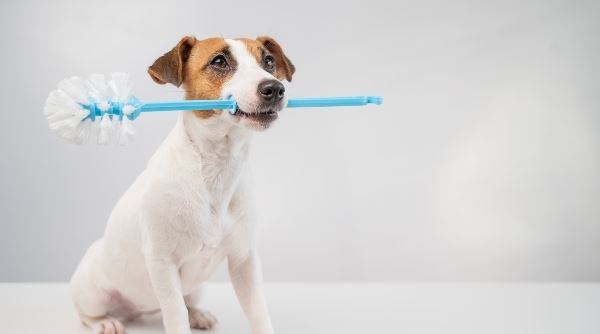Plumbing issues are frequent for many houses, but for those with dogs, they may become more complicated. This vital plumbing advice will aid pet-owning homeowners in avoiding future plumbing-related problems.
The American Veterinary Medical Association estimates that there are roughly 2.4 individuals per pet cat or dog in the US (Covington, 2023). Given these figures, it should come as no surprise that plumbing issues are frequent among homes. In order to avoid problems with your home's plumbing system if you own a pet, take into account the following precautions.
Avoid Digging
Dogs enjoy digging. All dog owners must cope with it because it is an unfortunate reality. You might want to be aware that this activity has the potential to harm your yard, especially the pipes that are hidden beneath it. Make sure your dog doesn't dig near buried water lines or pipelines if they have access to the yard (even if it's just a small area). Avoid having your pet's antics disturb these subterranean lines in any way by keeping an eye out for signs that show where they are located. For instance, if you see your dog digging next to a tree and pausing, this can mean they've discovered something. Check the area as quickly as you can to see what was disturbed, and then take action to stop any additional digging.
Cover Exposed Pipes
Dogs enjoy chewing on anything and everything, particularly when they are young. They will continue to bite on everything that appears intriguing as they become older and pass the teething stage.
The biggest chewers are frequently enormous and extra-large canines that weigh between 40 and 100 pounds. This group of dog breeds includes examples such as labs, retrievers, and collies. But smaller dogs like beagles and chihuahuas have a reputation for constantly biting and chewing. If you have one of these breeds, make sure to provide your pet a lot of chew toys. Additionally, it's critical that you put a metal or plastic barrier over all exposed pipes. Even chicken wire or other comparable materials might work.
Employ Drain Guards
Drain guards are crucial since they aid in preventing foreign objects from getting into your drains. Drain guards are essential for keeping pet dander from entering your pipes when it comes to pet-proofing.
Drain guards are readily available at any hardware store. You can cover your drains with these little plastic or metal barriers to stop hair and other debris from clogging them. The majority of drain guards contain a hole in the center to allow water to continue pass through your pipes without restriction.
Put the drain guard back on as quickly as you can if you need to remove it for any reason. Drains should not be left exposed for an extended period of time because doing so increases the possibility of clogs and other problems.
Store Cleaning Supplies
Keeping all cleaning supplies out of reach and secure is one of the most crucial things you could do to childproof your house, as any parent who has either raised children or is currently doing so is aware. Pet owners are subject to the same rules.
Make sure to store any cleaning supplies you have used after using them someplace your pet cannot access them. The majority of cleaning supplies are lethal, and simply a single drop from the bottle could be fatal to your pet.
Keep cleaning supplies out of the reach of small pets like hamsters and guinea pigs since they are more vulnerable to the chemicals in cleaning solutions due to their smaller size than dogs and cats.
Close The Toilet Lids
Both cats and dogs have been known to drink from the toilet, despite the fact that no animal lover wants to see that happen. When chemicals like drain cleaners are present in the water supply, drinking from the toilet can bring a number of health dangers. Keep the lid shut at all times to stop your pet from drinking from the toilet.
By having a fresh water bowl in your bathroom, you can also deter this practice. Just keep in mind that the water in the bowl needs to be changed every day.
Just keep in mind that the water in the bowl needs to be changed every day.
Avoid Flushing Cat Litter
Never run cat litter through your sink or flush cat litter down the toilet. Clay, sand, and other substances found in cat litter can clog pipes and drains. Additionally, the toxins in cat litter can contribute to pipe corrosion, that might eventually necessitate pipe replacement or repair.
Never run kitty litter through your sink or flush it down the toilet to avoid this from happening.




